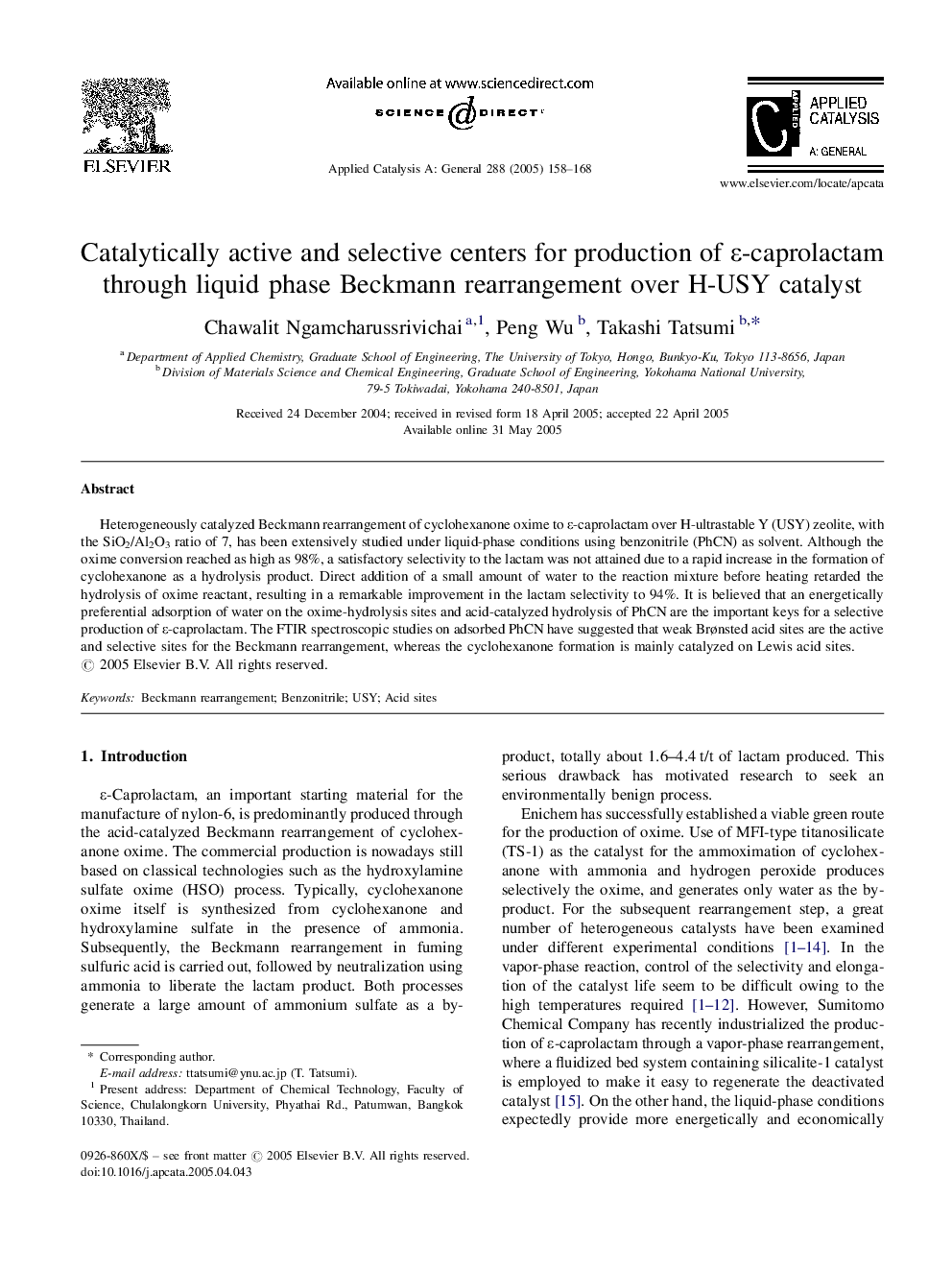| Article ID | Journal | Published Year | Pages | File Type |
|---|---|---|---|---|
| 9607927 | Applied Catalysis A: General | 2005 | 11 Pages |
Abstract
Heterogeneously catalyzed Beckmann rearrangement of cyclohexanone oxime to É-caprolactam over H-ultrastable Y (USY) zeolite, with the SiO2/Al2O3 ratio of 7, has been extensively studied under liquid-phase conditions using benzonitrile (PhCN) as solvent. Although the oxime conversion reached as high as 98%, a satisfactory selectivity to the lactam was not attained due to a rapid increase in the formation of cyclohexanone as a hydrolysis product. Direct addition of a small amount of water to the reaction mixture before heating retarded the hydrolysis of oxime reactant, resulting in a remarkable improvement in the lactam selectivity to 94%. It is believed that an energetically preferential adsorption of water on the oxime-hydrolysis sites and acid-catalyzed hydrolysis of PhCN are the important keys for a selective production of É-caprolactam. The FTIR spectroscopic studies on adsorbed PhCN have suggested that weak Brønsted acid sites are the active and selective sites for the Beckmann rearrangement, whereas the cyclohexanone formation is mainly catalyzed on Lewis acid sites.
Related Topics
Physical Sciences and Engineering
Chemical Engineering
Catalysis
Authors
Chawalit Ngamcharussrivichai, Peng Wu, Takashi Tatsumi,
